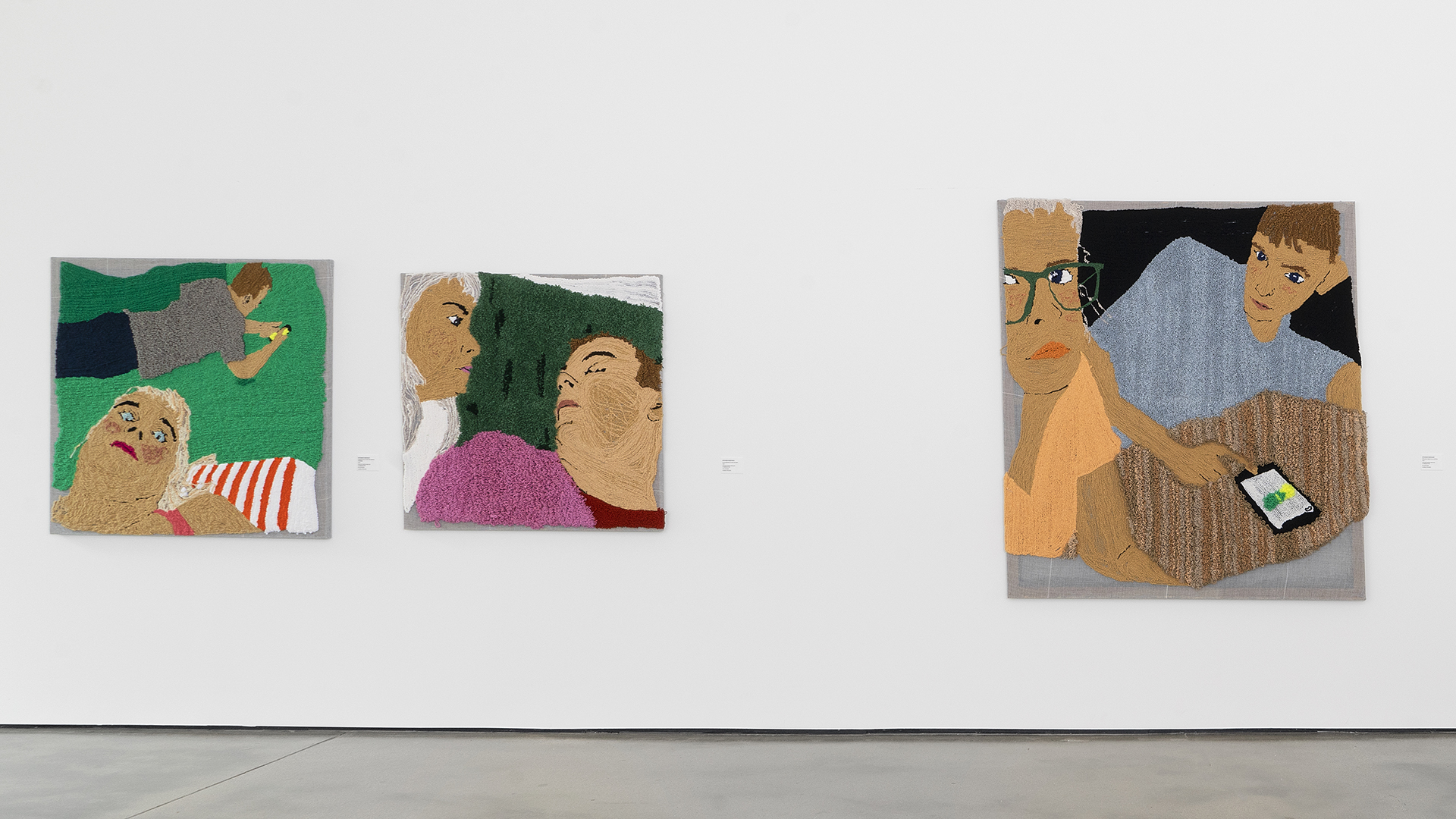Mychaelyn Michalec
From A Basement On A Hill
Aug 6 – Oct 24, 2021
THE IRA H. & SUSAN P. THOMSEN FAMILY GALLERY
The Contemporary Dayton is proud to present the work of Dayton-based artist Mychaelyn Michalec, with an exhibition of her newest body of work consisting of deeply textured tufted rug “paintings” and embroidered “drawings.”
In an ironic evolution of sensibilities, the primary ideas in Michalec’s new work concern themselves with that which nearly stopped her practice nearly ten years ago: the quotidian aspects of domestic life. Realizing the poetry of the images culled from her every day, she has turned the things that ostensibly marginalized her from her art practice into a prolific and relatable vocabulary that looks unflinchingly at the humor, irony, and pathologies of the familial through a lens of labor and craft that has traditionally and ironically been thought of as “women’s work.”
Michalec’s practice seemingly resides between what might be thought of as conflicting worlds: artist and mother. In response, she creates images that mirror this tension by illustrating moments of simultaneous connection and disconnection, choosing to focus on how those choices shape the contours of our lives. Using her own family as her primary subject, she depicts those closest to her in a shared space preoccupied with different things. Ironically, they are often distracted by electronic devices and smartphones, the primary tool she uses to capture the images from which the finished works are culled. She couples these images with awkward selfies taken during routine household chores and other daily tasks and activities.
In Michalec’s reckoning, our relationship with technology has become inseparable from our relationship with the world. Just as many of our personal relationships have become mediated through electronic devices, so too has our relationship with the materials of art making. In these new works, Michalec emphasizes the uneasy feeling that we’re often participating in a mere simulacrum of real connection. She then translates these seemingly innocuous snapshots into small embroidered works, paintings, and tufted rugs.
Michalec’s love of needlework has led her to use the tools and materials of domesticity to assert the validity of “women’s work.” In fiber arts, the identity of the maker is codified in the work not only by the choice of materials and subject but also by the long histories of the processes by which the work is created. In this new work, Michalec participates in this historical trajectory through the processes of embroidery and rug tufting. When combined with the subject matter of contemporary domesticity, she conflates issues of craft and cultural value. The tactile aspect of rug making also turns an image into an object that can be touched and interacted with; an object that comes with domestic and therefore gendered associations.
Also part of Michalec’s art-historical reckoning is the decidedly unromantic and often even abject depiction of herself and her family, bringing to mind, perhaps, Diego Velázquez’s (Spanish, 1599–1660) Las Meninas (1656), which depicts the Infanta Margarita, eldest daughter of the new queen of Spain, surrounded by her ladies-in-waiting, her dwarf, her mastiff, and Velázquez himself, in mirror reflection, seen standing at his own easel. In this work, all are seen not in the splendor typical of royal portraits of that time, but rather with an unvarnished candor amid a harshly revealing mise-en-scène. One also thinks of the raw gaze of Alice Neel’s (American, 1900–1984) portraits, her subjects awkward, fixed in moments devoid of circumspection and affected grace.
To emphasize her interest in the use of line and color, Michalec chooses to use an industrial tufting gun to electrically inject yarn through a fabric substrate, accelerating the traditional process while also hand-tufting to vary the texture. The works, often stunningly scaled, are then stretched and installed in the tradition of painting, positioning them in the realms of both domestic craft and fine art and allowing us to reconsider that which we have come to think of as the normative within the fiction of the contemporary, middle-class American existence.
The exhibition will be accompanied by an original short film as part of The Co’s new In Studio series produced by The Co and Columbus-based videographer Phil Garrett and screened exclusively online at thecontemporarydayton.org. Additionally, The Co will produce an artist book as part of the new Primer series which will include an essay by Dr. Jordan Amirkhani, a regular contributor to Daily Serving, Artforum, and Burnaway. Dr. Amirkhani is a Professorial Lecturer in Art History at American University in Washington, D.C. whose research and writing focus on intersectional feminist critique and the contextualization of issues of gender, class, and race within the development of European and American art from the nineteenth century to the present.
Courtesy of the artist. Photos by Jake Holler.




